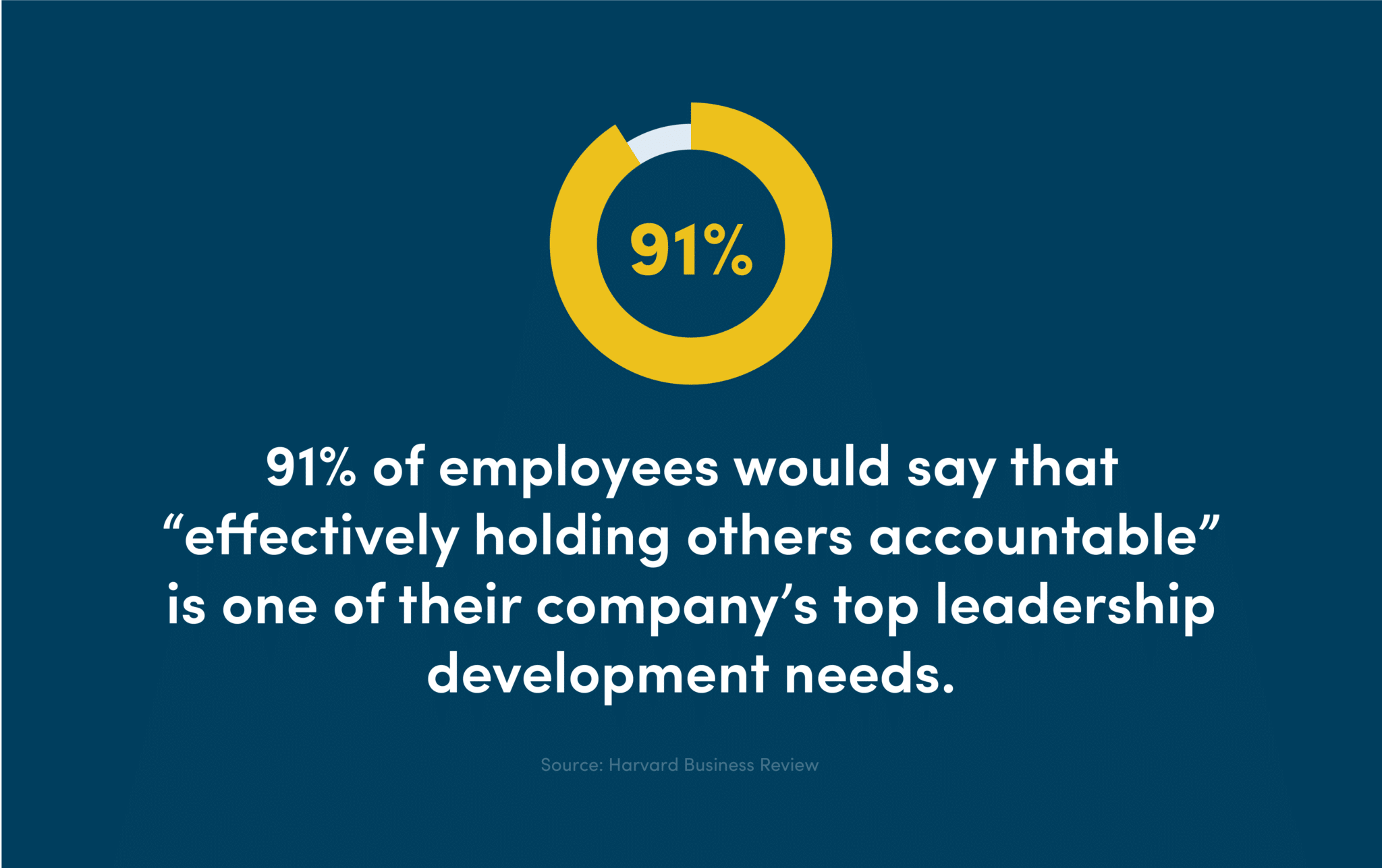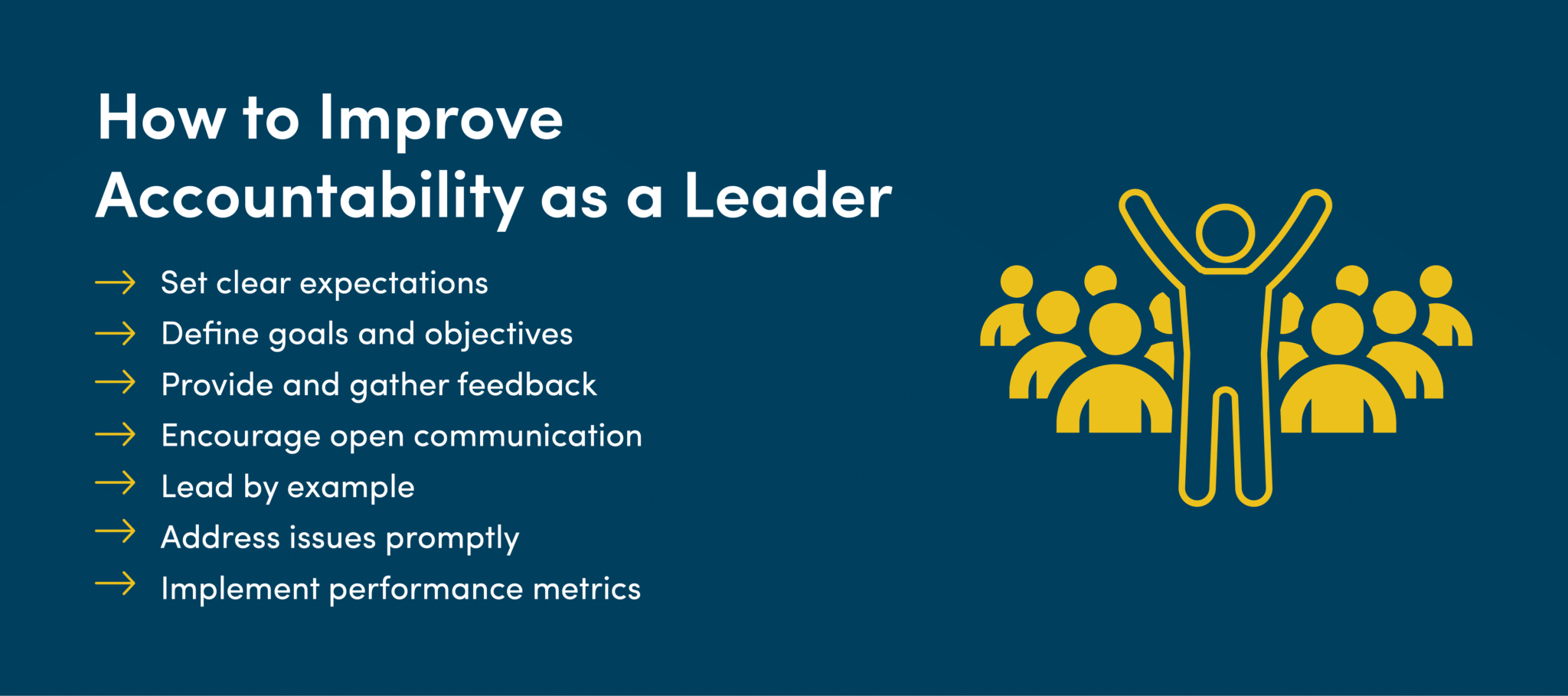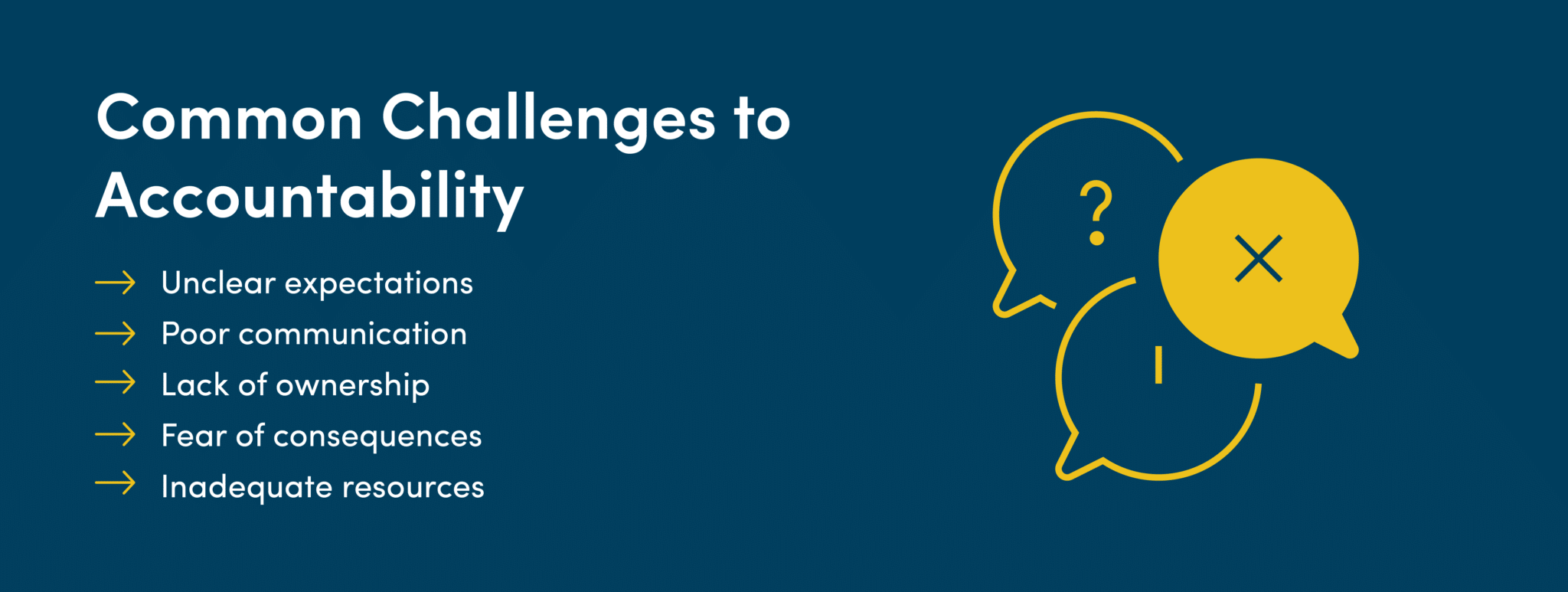Why Accountability as a Core Value is Important for CEOs

Imagine a business where the right things consistently get done on time, most of the time (nobody’s perfect). Where people regularly follow up on what they say they’re going to do. Where everyone in the organization – from senior leadership to front-line employees – is expected to uphold commitments to each other and to customers because integrity is a core organizational value. No one is stressed, wondering whether the people on the team will complete their to-do lists in time for next week’s presentation or event, and no one is overworked from picking up the slack for others in their department.
Sound like a dream? It doesn’t have to be.
This is known as having a “culture of accountability.” It doesn’t happen by chance. It takes hard work to achieve. And leadership accountability must be an enduring company core value rather than a management fad of the month. When employees see company leaders following core values and putting in the hard work–even when there’s an easy way out–they’re often inspired to do the same. A culture of accountability creates a team mentality in a business, where each member of the team feels like they’re supported in working toward a common goal.
Companies with this type of culture tend to be market leaders. Companies that prioritize accountability don’t have to spend most of their time trying to catch up or, worse, get caught in a scandal where one thing was said, and quite another was done.
Research shows that companies with a culture of accountability reap many benefits, including:
- Higher employee morale
- Increased employee participation
- Improved job performance
- Increased employee commitment
- Increased creativity and innovation
- Increased employee satisfaction
It’s clear: accountability matters, and when people are held accountable for doing what they say they’re going to do, everyone wins.
If you’re in the beginning stages of becoming an executive coach, or you’ve studied what it takes to create a positive company culture, you know that accountability matters. If you don’t have accountability in business or would like to improve on what you have, here’s how to do it.
- What Is Accountability?
- Why Is Accountability as a Core Value Important?
- How Do You Create an Accountability Value Statement?
- How Can You Improve Accountability as a Leader?
- What Are Common Challenges to Accountability?
- How to Live Your Accountability Core Values
- Wrapping Up: Accountability as a Core Value
What Is Accountability?
Accountability simply means that someone is held responsible for completing a task, goal, or assignment. All too often, the word accountability has a negative connotation. We’ve all heard coworkers say, “Someone needs to be held accountable” when something goes wrong. While this is true, accountability can also be used as a celebratory, encouraging tool to ensure that hard work doesn’t go unnoticed.
A culture of accountability means that employees aren’t doubling up on work, trying to pick up the slack for a coworker who isn’t holding up their end of the deal. It also means that leaders are required to stick to their values and act in accordance with their goals, even when times get tough. When employees and leaders alike see that they’re going to have to answer for their assignments, tasks, and goals, they’re far more likely to keep working toward them.
Why Is Accountability as a Core Value Important?
Good employees can easily become disillusioned with a company they previously respected when they’re doing the work of several people. Employee satisfaction can also drop when they’re reprimanded as a team for failing a task, even though many of the employees did their job. In fact, 91% of employees would say that “effectively holding others accountable” is one of their company’s top leadership development needs.

When accountability is a core value in a company, it doesn’t just help keep employees accountable to supervisors–it also creates a culture in which employees can keep each other accountable. Clear, open, direct communication can stop issues before they start, allowing employees to make sure that they’re working together toward their common goal.
At the leadership level, it’s key for executives to live out a culture of accountability. This doesn’t just mean celebrating when things go right–it also means speaking up and taking responsibility when things go wrong. Admitting wrongdoing–as well as taking the steps that can remedy a problem–is an important part of living out the value of accountability. Doing this in front of employees can be difficult, but it can encourage them to step up and take the same level of responsibility when they fail to complete a task or meet a goal.
How Do You Create an Accountability Value Statement?
Creating an accountability value statement provides your employees with a framework they can use to embody your organization’s core values moving forward. To create an accountability value statement, follow these steps:
- Define your purpose and scope: Create a clear statement that defines the purpose of your accountability statement.
- Set expectations: Articulate the standards and expectations that individuals within your organization need to meet, using specific language that describes what success looks like.
- Establish measurable objectives: State measurable objectives and key performance indicators (KPIs) that will be used to assess accountability, ensuring the objectives are achievable, relevant, and measurable.
- Create a reporting structure: To hold you and others accountable, create a reporting structure that makes it easy for updates and feedback to be relayed to the appropriate parties.
- Address consequences: Communicate the consequences for failing to meet your established accountability expectations.
- Review and revise: Accountability statements change over time. Make sure to revisit and revise your statement periodically as you and your organization grow.
How Can You Improve Accountability as a Leader?
As a leader, it’s crucial to improve your accountability to instill trust and respect in your team. There are several steps you can take to improve your accountability as a leader, which we describe in detail below.

1. Set clear expectations
In order to hold people accountable for their performance on the job, they have to know what you expect of them. The quickest way to create a demoralized, disengaged workforce is to leave it to employees to figure out what they’re supposed to accomplish and then slam them at performance time for not doing what you wanted them to do.
The first step in creating a culture of accountability is to clearly define expectations – not the tasks, the outcomes – for individuals, teams, and the organization as a whole. The key is to define the outcomes in a way that leaves as little room as possible for individual interpretation. For example, at the end of the year, the sales team will have acquired X number of new customers while increasing sales by Y percent and margin by Z%.
At the organizational level, define the desired outcome in terms of the company’s destination – where are you going, and what will it look like when you get there? To enhance employee buy-in and understanding, go well beyond financial metrics. Include outcomes that will resonate with employees, such as improving customer satisfaction, speeding up delivery times, reducing scrap, or developing a new product. Define your brand, your structure, core processes, tools, critical systems, etc. This supports getting your team focused on achieving the right outcomes so you can trigger the ‘prove yourself right’ tendency all adult humans have and engage employees in using their brains to ponder and explore the actions or tasks needed to reach the destination.
When assigning accountability (who will do what, by when, with what resources) at the individual level, always ask, “How does this get the organization closer to winning?” Use active listening skills to ensure that each member of the team has a full understanding of their role. Make sure someone has clear ownership of every significant initiative or task, and assign the resources needed to get the job done.
When identifying the target, clarify the current state as well as the end state. Comparing the gap between the two will improve the accuracy of resource allocation and create a baseline for measuring progress toward the goals
2. Define goals and objectives
One of the factors that determines what makes a great coach or leader is knowing where you’re going and how you’re going to get there. If one of your goals as a company is to become an industry-leading accountability core values example, talk candidly about your current baseline. If your company is setting goals and falling short, dig into the problem and develop an achievable yet ambitious goal for the next quarter.
3. Provide and gather feedback
Provide regular performance feedback – quarterly at a minimum, monthly or weekly preferably. Waiting until the end of the year to provide feedback does not promote accountability for optimum performance.
Gathering feedback is just as important as providing it to employees. Give your team the chance to provide open, honest feedback about how you and other leaders could improve your organization. This doesn’t necessarily mean providing an anonymous suggestion box (although that can be helpful!). Meeting with your employees to talk with them about how they think you–and the company as a whole–can better move forward can both give you key insight into your organization’s inner workings and allow your employees to understand that their opinions are valuable.
When providing employees with feedback, it can be helpful to provide them with a copy of their evaluation prior to meeting with them to discuss the thoughts of your team. This allows your employee to take some time to gather their thoughts, talk about ways that they feel they can improve, and come prepared to discuss their next steps with your company.
4. Encourage open communication
Constantly communicate your definition of winning so people and teams never lose sight of it. Make it visual, make it transparent, and regularly post progress made toward the destination.
In addition to clearly communicating your goals with your team, it’s smart to create a culture where anyone can talk to anyone. This means that lower-level employees are welcome to schedule a meeting with leadership to ensure the strengths of lower-level employees are not overlooked. While salaries and responsibilities may be different, an open-door communication policy helps everyone feel valued within the organization.
Using a company-wide calendar can be a helpful way to encourage open communication. This allows employees to see your public schedule and request meetings during free time while also allowing you to do the same. If a culture of open communication is a change from your organization’s standard operating procedure, it’s a good idea to have a meeting with your employees to explain the reasons behind the change and provide them with the opportunity to ask questions.
5. Lead by example
When you have an accountability value statement, your employees are going to look to you to set the standard. Speak up and take responsibility when something goes wrong. Give credit where credit is due. When you start to boost your own accountability, you’ll see the trickle-down effect it has on your business.
6. Address issues promptly
Many of us have been there–stuck in a toxic workplace where we’re constantly wondering whether we’ve failed to meet expectations. When you create a culture where problems are addressed promptly, you allow your employees to rest assured that if there’s a problem, they’ll know about it without having to guess whether their performance is slipping.
When you encounter a problem, it’s important to learn from failures. When you see something that isn’t working in your business, addressing the problem right away allows you to take accountability for progress in your organization–and provides the employee (or leader) with the opportunity to make a change.
Talking to employees immediately when they make a substantial error can help stop problems before they have the chance to grow. When you go to your employees with a problem, they know that they’re trusted to make it right–and that you believe in their ability to get the job done.
7. Implement performance metrics
Measure results using qualitative and quantitative data, as this keeps people focused and engaged on what you want them thinking about. It also helps minimize the MSU (making stuff up) that goes on in any system.
Performance metrics can also help to eliminate tricky workplace politics. When you use key performance indicators (KPIs) to inform personnel decisions, employees know that their performance–not their likeability or popularity–is what will move them forward. This can boost employee morale and help your employees take their performance to the next level, as they know that their hard work will not go unnoticed by the leadership team.
What Are Common Challenges to Accountability?
Accountability can be a tough value to implement. Often, leadership team members feel nervous to publicize their own failures and shortcomings, as they worry that doing so could lower their employees’ faith in their ability to lead the company. There are several challenges leaders face when it comes to accountability, such as unclear expectations, poor communication, lack of ownership, fear of consequences, and inadequate resources.

Thankfully, the opposite is often true–when employees see their leaders as humans, they’re more readily able to admit their own areas in which they have room to grow. Leaders who are working to create a culture of accountability must have tough conversations with employees and other leaders. Conversations in which someone is celebrated for their commitment to their role can be fun and exciting–but talking with employees who aren’t living up to expectations can be tough. It’s important to have these tough conversations carefully and respectfully.
How to Live Your Accountability Core Values
Creating a culture of accountability involves more than holding people and teams accountable for their performance outcomes. It also involves holding them accountable for how they go about achieving them. This is especially true for senior leadership and management.
Are your leaders and managers aligned with and adhering to the company’s core values as they perform their jobs every day? In other words, are they living the values rather than paying them occasional lip service? As with performance outcomes, success in this area depends on clearly defining expectations.
Core values play a critical role in organizational culture, so start by deciding what kind of culture you want. Then clearly define it at the behavioral level – including what is considered acceptable and what isn’t. Again, be as specific as possible in order to minimize or eliminate others’ interpretations of what you want the culture to be.
These days, most companies do a reasonably good job of defining their core values. However, they tend to fall short in two areas: communicating values using strategic conversations on a regular basis and holding people accountable for core value-driven actions. To avoid having your values become just a plaque on the wall, I recommend conducting a “core values review” at least once a year.
During a senior leadership meeting, pause and ask:
- Do we have clearly defined organizational values?
- Do we communicate them on a regular basis?
- Do employees understand them? How do we know?
- Do our values support our vision of winning?
- Do we, as senior management, role model the values and behaviors?
- Do we hold ourselves and others accountable for living our values every day?
Keep in mind that values can change over time, and you may need to periodically update them. You may also need to redefine excellence to gain better alignment throughout the organization. Use your experience and decision-making skills to decide what is non-negotiable and what can be updated due to changes inside and outside your organization. Then adjust as necessary.
Once you’ve defined the culture you want, role model it by living the behaviors. One of the most common executive coaching mistakes is failing to live up to one’s own expectations. For example, if you’re trying to build a culture of accountability, you may want to make personal (self) accountability a core value. In dysfunctional companies, leaders often try to shift the blame when they make mistakes. In accountable organizations, they acknowledge their mistakes, self-correct, and refocus on winning.
The quickest way to destroy a healthy culture is to tolerate behavior that continually violates the core values. When you see people acting contrary to your values, take swift action. If necessary, provide coaching to help them align their behavior with the values, but don’t tolerate continued violations.
Otherwise, people will lose respect for you as a leader and the organization as a whole. You know you’re living the values when you become willing to fire someone who doesn’t align with them.
Keep in mind that a culture of accountability has to be intentional. If senior management doesn’t take the time to define the values that guide your organization – and then live them – people will operate on their own. That’s no way to build a winning business!
Wrapping Up: Accountability as a Core Value
The professionals agree: one of the key factors in measuring success as an executive coach or other business leader is to create a culture where accountability is valued at every level.
Whether you’re working to revamp your company culture or you’re simply looking for a boost in morale, prioritizing accountability at every level of your organization can help each team member feel seen, heard, and valued.
Category: Leadership
Tags: accountability in business, company core values, culture of accountability

